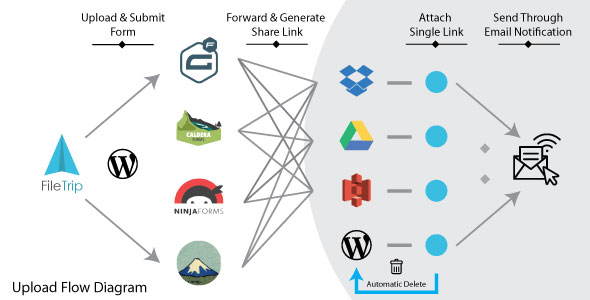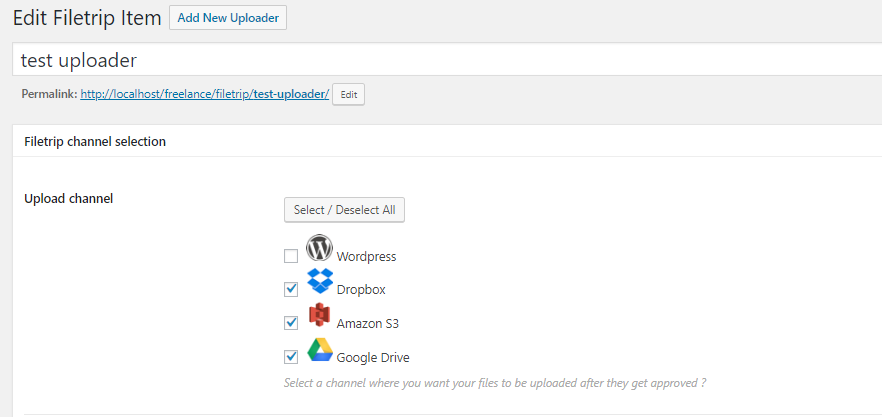
Figure (A) – FileTrip Upload Flow Diagram
In this section we are going to describe the flow of transmission of uploads to multiple channels until it reaches website admins through either notification or manual review.
FileTrip doesn’t dictate any limitation on how many channels a user can choose to submit files into; in fact you can specify all of the channels to be used as forwarders when you submit a file through FileTrip uploader instance with its configuration. So, if want to build a use case, let’s assume that site administrator has built a custom form using (Caldera Forms) and integrated FileTrip to be used as a native uploader with the following options:
Selected Channels
Let’s select the following:
- Dropbox
- Google Drive
- S3
Generate shared links
Note that channels with Generated shared links are having a mutual exclusion relationship, so that if any channel was excluded you cannot use its generated links as the channel will not be used to upload any files, thus, there will be no link to share or attach to an email.
Now if a FileTrip uploader with the aforementioned configuration used in a form, the submission process will be as follow:
- Files will be uploaded to WordPress first, and they will be stored as native attachments.
- The plugin will check which channels are selected and start forwarding the files in FIFO mode to all of its selected channels, in our example (Dropbox, S3, and Google Drive) are going to have a replicate of the uploads in their pre-configured destinations.
- During the previous step, the plugin will determine which link it should generate to use it for notification, mainly through email. In our example, one uploaded files get replicated to Dropbox, FileTrip will follow-up with API calls to generate accessible links, store them in the database, and finally attach them to the eventual email notification.
- Finally, FileTrip will check if `Auto-delete` settings was enabled, it will delete any files from your local website and only retain the copies you have in the cloud.


